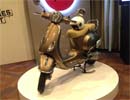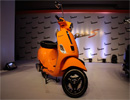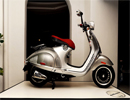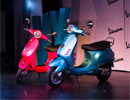| Vespa
Towards the end of the Second World War, Enrico Piaggio was driven to start up production again by the idea of offering the widest possible market a low-cost product. And, with this idea in mind, the factory at Biella produced a motor-scooter. This prototype, designed by the engineer Renzo Spolti and coded MP5 (Moto Piaggio 5), was christened "Paperino", that is "Donald Duck", by the workers. But Enrico Piaggio didn't like it, and passed the job over to Corradino D'Ascanio toreview the project and build something different, more advanced both technically and stylistically. Rather than modify the Paperino, D'Ascanio designed a completely new vehicle which was soon to become the Vespa. However, before "evolving" into the Vespa, about one hundred Paperinos were produced which are today highly prized by collectors the world over.
Global Future
"Today more than ever, the Vespa is a global brand: the Pontedera factory turns out Vespa scooters for Europe and the Western markets, including the Americas; in Vietnam, the Vinh Phuc plant produces vehicles for the local market and the Far East countries; in India, the brand new Baramati plant, which opened in April 2012, serves the Indian market. The Vespa also continues to set the pace in terms of aesthetic and technological innovation. With the arrival of the LX/S and GTS/GTV families, production has more than tripled over ten years, during which time more than one million new Vespa scooters have appeared on the world's roads. Today the 946 perfectly embodies the Vespa's intention of continuing to provide a window on the future while honouring its legacy. The legend demands nothing less."
|





